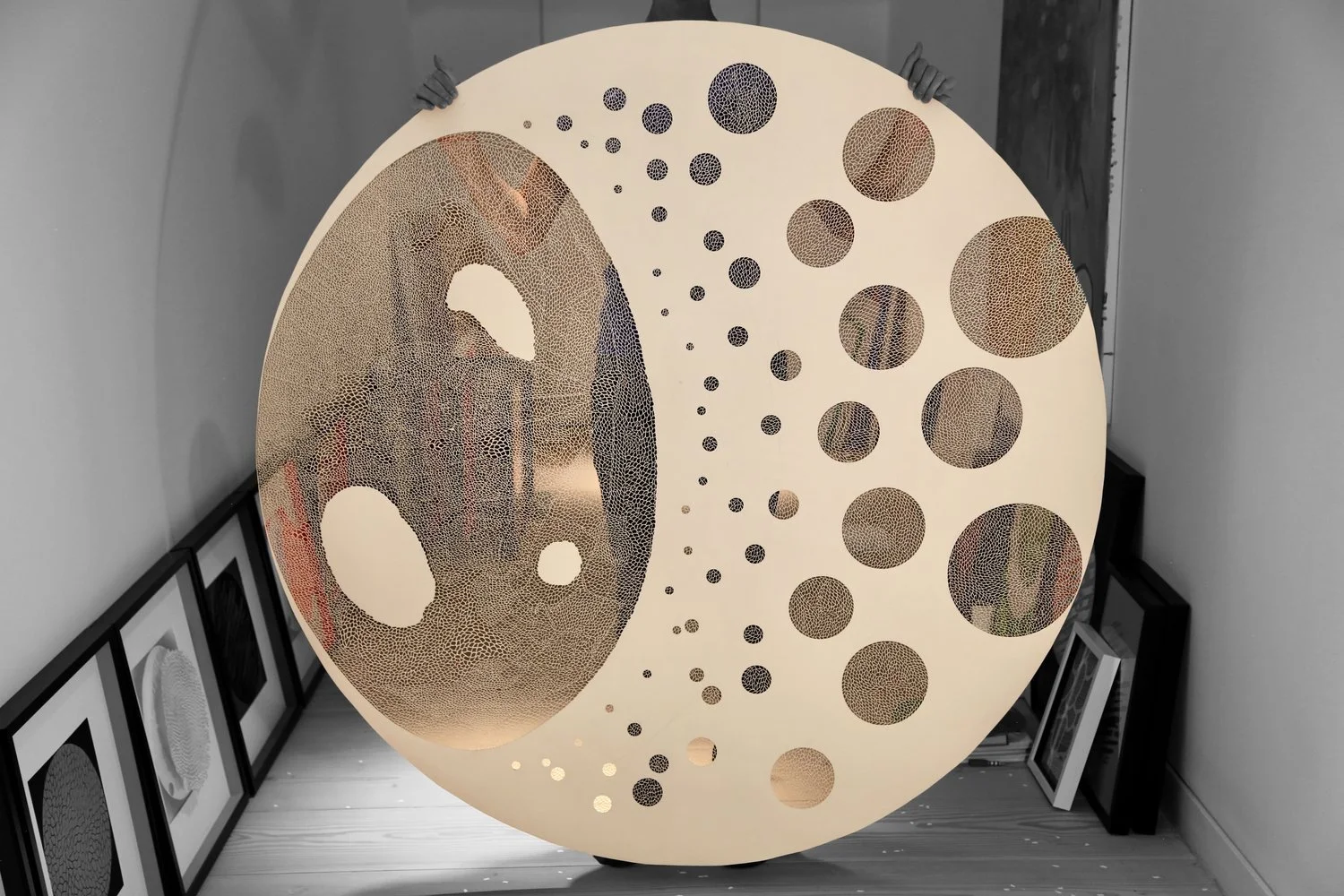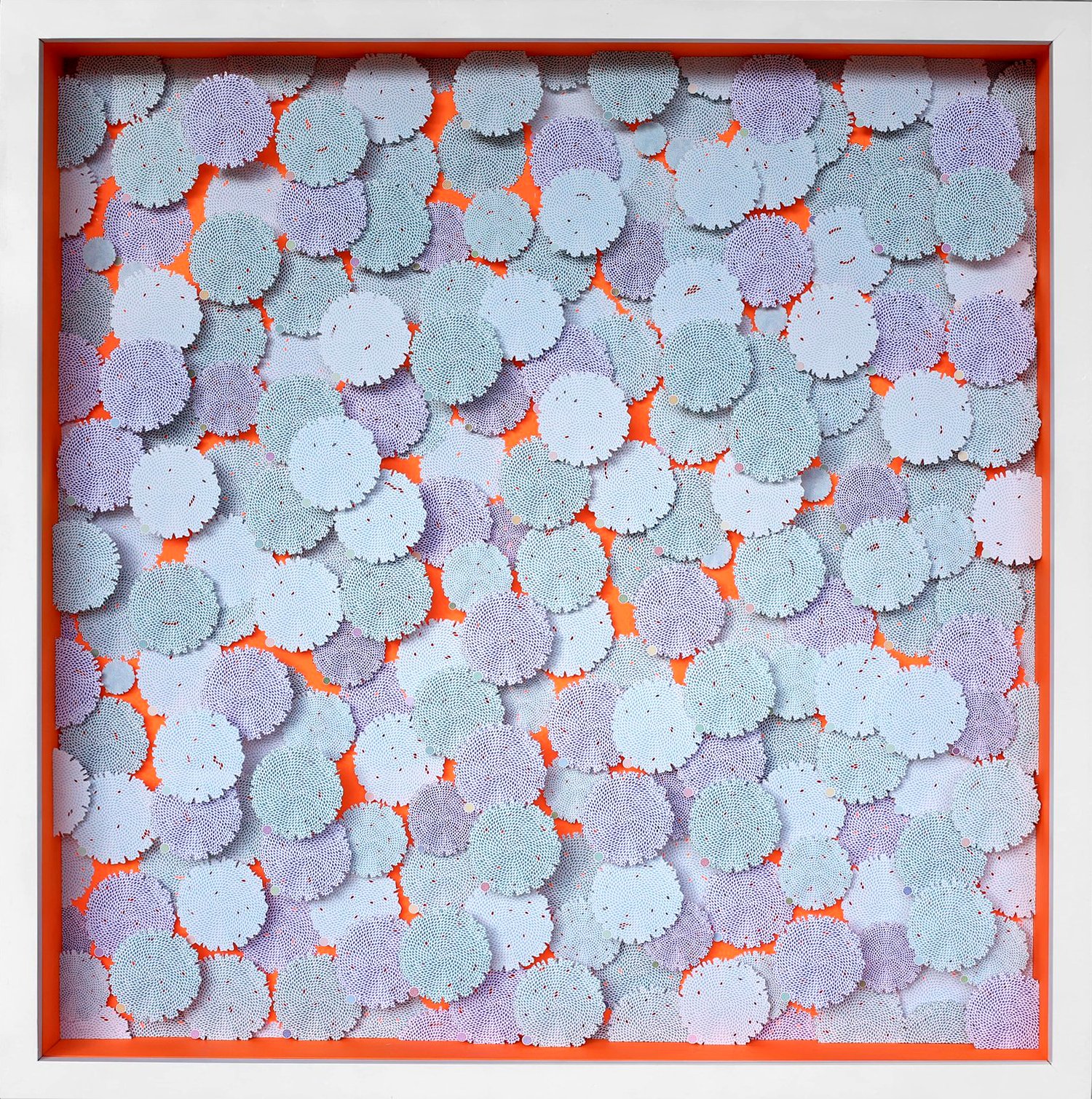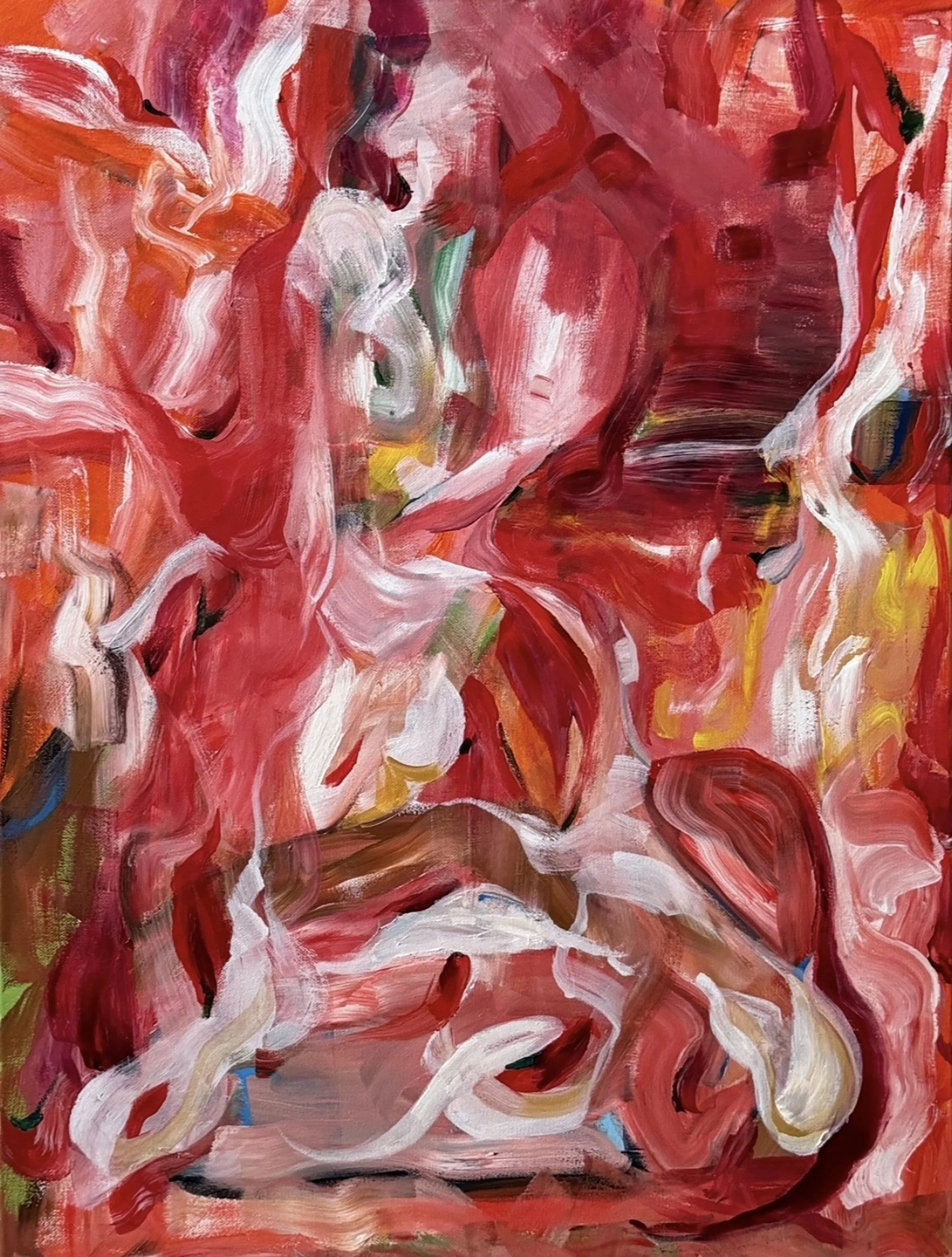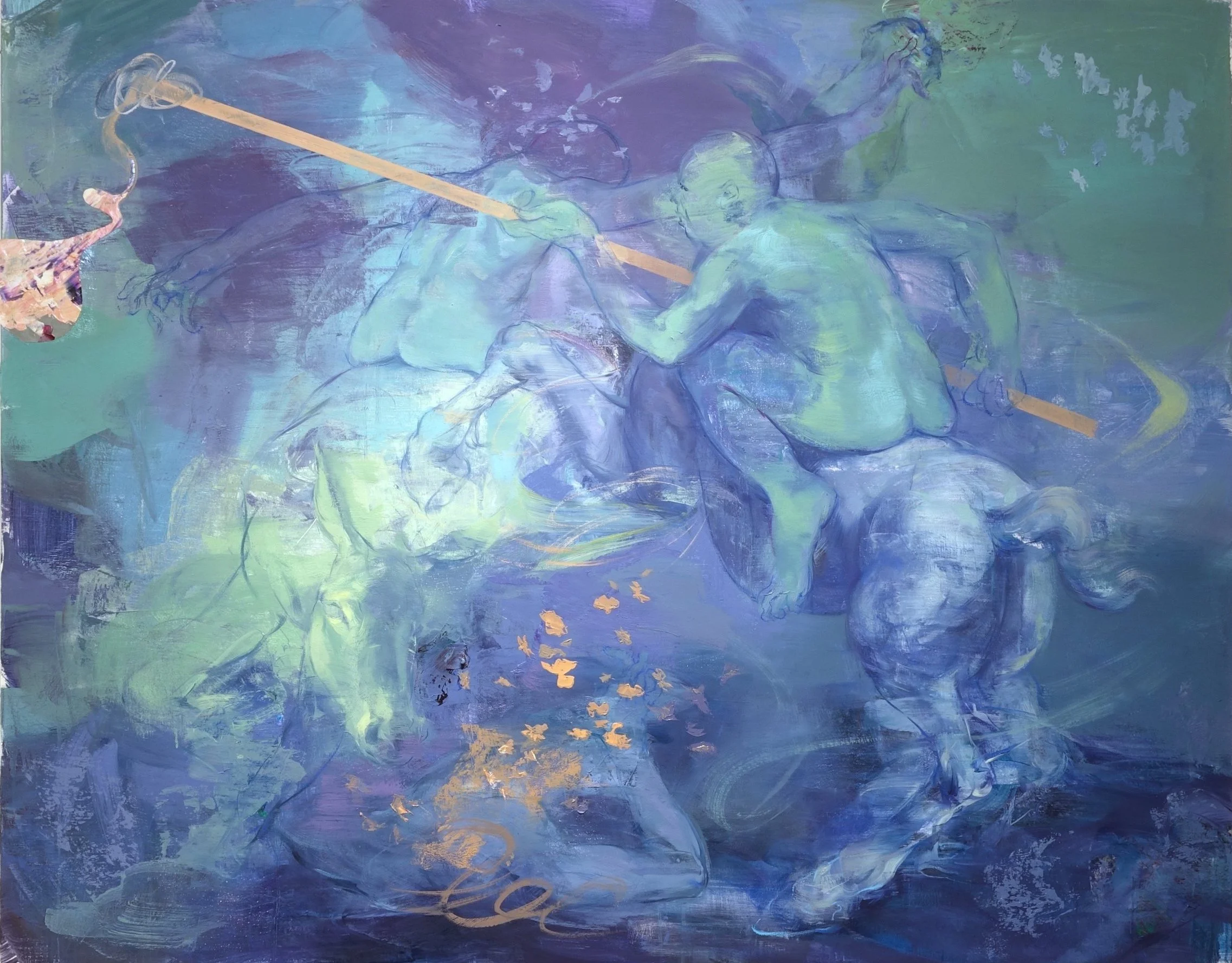10 Questions with JR CHUO
JR CHUO is a contemporary paper cut and spray paint artist based in the UK, who cuts all of his designs by hand, creating intricate paper artworks.
Alongside his paper cutting, CHUO is studying for his degree in Asian and Middle Eastern Studies at the University of Cambridge. Although CHUO is only 19 years old, he has been paper cutting for over six years, during which time he has sought to continually perfect his art form. Despite the precise nature of his work, CHUO’s designs radiate organic warmth, containing a myriad of fascinating leading lines and shapes that capture the viewer’s attention. Each individual paper-cut shape is unique, and hundreds, sometimes thousands, of these shapes work together in harmony to form large seamless designs.
JR CHUO’s work will soon be exhibited in Milan during the upcoming Milan Fashion Week and Milan Design Week Fuorisalone. His newest piece, ‘Roppongi Reef’, can be seen alongside his large paper cut artwork, ‘Fluoro Pink Shibuya’, at the Tokyo International Art Fair in October. CHUO is currently working on a new collection of paper cut pieces that will build on his original ‘Paper Cuts In Perspex’ collection and will consist of hand-cut paper lattice works painted in fluorescent colours and suspended in clear acrylic.
‘Roppongi Reef’ builds on CHUO’s ‘Mini CHUO Reef Collection’ of pieces aiming to capture the tragic beauty of dying corals, using a fluorescent background colour and tiny details that have been cut into each piece of paper.
JR CHUO Portrait
ARTIST STATEMENT
One of the central ideas behind CHUO’s work is the notion of façades in society that conceal brutal realities. CHUO takes inspiration from the organised nature of urban subway maps and the simplification of metropolitan areas, which dissimulate the complexity of the areas they represent. He believes this concept is present in the way our societies and governments oversimplify narratives that deal with the environment and inequality. Many of his artworks are named after Japanese subway stations and lines.
CHUO also explores the impacts of climate change on coral reefs, juxtaposing this message with the vibrant colours that he uses in his work.
His artistic process is labour-intensive, requiring a deep focus on the present moment. Cutting all of his designs by hand, one small paper cut piece usually takes several weeks to complete. CHUO uses his completed paper cut pieces to create a wide range of work, from spray paintings to digital versions of his designs cut by hand to create further intricate three-dimensional artworks. Thus, each individual paper cut piece generates a wide array of possibilities for CHUO to experiment with.
The patterns found in CHUO’s pieces are largely inspired by organic forms found in coral reefs. His bright colour palette takes inspiration from the striking colours emitted by certain corals before warming ocean temperatures bleach them as a result of climate change. CHUO aims to capture the ‘tragic beauty’ of dying corals in his work, by creating striking designs, often using fluorescent colours to draw attention to the intricacy of the artworks. However, he hopes that viewers feel optimistic when looking at his vibrant work and that his pieces encourage an appreciation for the beauty of corals and the versatility of paper.
AL-TIBA9 ART MAGAZINE ISSUE16
INTERVIEW
You are extremely young, and yet you have been practicing art for many years already. How did you start getting involved with art? Do you remember when you first realized you wanted to follow this path?
I have been creating art from a young age and enjoyed using acrylic paint and pencil, often to create architectural drawings of contemporary houses and realist recreations of photographs. I also made a number of short movies and produced hand-drawn animations. I have always been passionate about visual art and have created work in various media. However, after coming across paper cutting on a trip to Japan in 2015, I was drawn to the stunning and intricate designs and wanted to explore this art form further. After experimenting with paper cutting, I decided that this medium had endless possibilities, and it played into my obsession with detail.
You are currently enrolled at the University of Cambridge, for a degree in Asian and Middle Eastern Studies. How much of these cultures can we find in your work? Do you get any influence from your studies?
My work is significantly influenced by traditional Japanese Buddhist aesthetics, such as the notions of wabi-sabi and ensō, as well as contemporary Asian artists, such as Takeshi Murakami, Ai Wei Wei and Nahoko Kojima. I am particularly drawn to the vibrant colours seen in many contemporary Japanese artists' works and the preservation of tradition, in the form of paper cutting techniques. Many of my pieces are named after Japanese subway lines and stations, as I can draw from my lived experiences in Japan to inform each piece. The use of subway lines and stations is used to reflect the notion of façades in society that conceal harsh realities. The use of imagery and, more recently, language as a way of making the complex palatable is a constant theme in my work.
Fluoro Pink Shibuya, Hand-cut paper, spray paint, acrylic, 120x120 cm, 2021 © JR CHUO
Your preferred technique is paper cutting. Why did you choose this technique and what does it represent for you?
I was immediately struck by the intricacy of ise katagami paper cut pieces during my trip to Japan in 2015. As someone who greatly appreciates detail in art, I found that I was able to achieve my desired level of precision through paper cutting. My original paper cut designs are hand-cut into one individual sheet of paper, allowing each small paper cut shape to work together in harmony to create large seamless designs. I love the juxtaposition between the minimalist nature of paper cutting and the complexity that I am able to create in my designs. I also enjoy the mental stimulation of paper cutting in the way that it forces me to be innovative due to its unforgiving nature and the fact that I use one sole sheet of paper to create each original design.
As you mention in your statement, "despite the precise nature" of your work, your designs "radiate organic warmth". How do you achieve this?
My artwork consists of thousands of tiny hand-cut shapes that work together in harmony to form large seamless lattice-like designs, cut into one single sheet of paper. I use a range of vibrant and fluorescent colours, often oranges and pinks, that radiate warmth and reflect the colours emitted by certain corals before they are bleached. After laying out the concept and design, the final image of my paper cut pieces appears to be organic, partly due to the intuitive nature of the process.
What are the main themes behind your work? What messages would you like the viewers to get when encountering your work?
The impact of climate change on coral reefs is a theme that runs through all of my work, and I try to capture the essence and complexity of corals in my designs. The patterns found in my designs are inspired by patterns found in particular corals, and the fluorescent colours reflect the striking colours emitted by certain corals before they are bleached due to warming ocean temperatures.
The process of creating my work is incredibly meditative, requiring deep focus on the present moment. The act of cutting tiny interlinked shapes out of paper is rather unforgiving and thus enables me to reach a flow state, where my mind is centred and calm. My process is inspired by Zen Buddhist aesthetics, such as wabi sabi and ensō, which invoke a similar grounding sensation. I hope that people can access a similar meditative state by simply observing my work and following the fluid leading lines that run through my pieces.
Fluoro Purple Reef, Hand-cut paper, spray paint, canvas, 120x120 cm, 2020 © JR CHUO
Roppongi Reef, Hand-cut paper, spray paint, 109x109 cm, 2021 © JR CHUO
You are still very young, and you will have time to grow and experiment. What would you like to try or experiment with, should you move from paper cutting?
The medium of paper is a central thread that runs through all of my work and is unlikely to be replaced by another medium. However, I would love to experiment with sculptural pieces and installations in the near future. I have numerous ideas that I feel would work well as larger and more immersive artworks.
What do you think of digital exhibitions and presentations? Did you participate in any over the last months? Or are you into more traditional ways of presenting your work, like physical exhibitions in galleries and museums?
I believe that the digital movement and advancement of technology is extremely beneficial to creative industries, as it has revolutionised the way we operate. As artists, we now have the option of exhibiting our work internationally without having to ship the physical piece. I have had my artwork exhibited in Milan and Fuerteventura recently using large screens to present high-quality images of my work in physical gallery spaces. I still believe that lots of artwork are best viewed in physical galleries as photos cannot capture the true essence of a piece. My paper cut artworks interact with their surrounding environment to create interesting shadows depending on the lighting and time of day. For this reason, I definitely prefer to exhibit my work in physical galleries and art fairs.
As a young Gen Z, what do you think of the art community and market? Where do you think it'll go and what changes do you wish to see in the future?
Although I see the art market moving in a digital direction, I still feel that digital art will never be able to replace all other art forms. I believe that digital art and material art forms will coexist in an increasingly diversified artistic sphere. My work is largely three-dimensional and thus incredibly difficult to capture using a camera. The way many artworks interact with their surroundings adds to their essence and is another aspect of art that is challenging to replicate in a digital form. I hope to see a diverse art market and community, that continues to push the boundaries of art and encourages originality and authenticity.
Tozai Rush Hour Red Dot, Paper cut, spray paint, pen, 109x109cm, 2021 © JR CHUO
What do you hope to accomplish this year, both in terms of career goals and personal life?
I have many exciting projects planned for 2022 that will help me to spread my message and work to a much wider audience than ever before. I hope to have a number of new exhibitions and take part in some more art fairs in 2022 and continue to share my work with people across the world using social media. This year, I aim to take more tangible action regarding coral bleaching and use my art to support coral restoration projects around the world. Coral restoration and coastal protection are such important issues and I am working hard to give back to the coral reefs that have inspired my paper cut artworks for over six years. I also hope to branch out into sustainable JR CHUO fashion items that would enable me to amplify the impact I am able to have in the restoration of coral reefs and highlight their importance in deciding the future of our planet.
In my personal life, I hope to schedule time every day for rest and relaxation as I always create my best work when my mind is at peace.
Finally, what are you working on right now? Anything exciting you would like to tell our readers?
I have just released my 'CHUO lines' collection of original paper cut artworks framed in clear acrylic and intend to develop this idea further by creating larger framed paper cut artworks. The 'CHUO lines' collection uses phrases to reflect the superficiality of the language used by those in authority. Increasingly, words speak louder than actions, and this collection was created to draw attention to this.
My next collection of paper cut pieces will likely consist of large-scale artworks incorporating the 'CHUO lines' collection's written element. Moreover, I have many exciting projects coming in 2022 and am planning two shows and participation in a major art fair in the summer.
To be updated on my latest shows and artwork releases, please sign up to my email list or contact me directly.

























